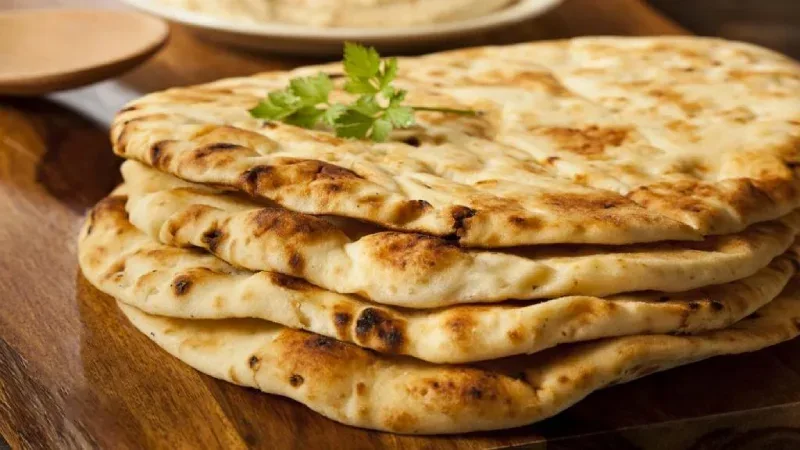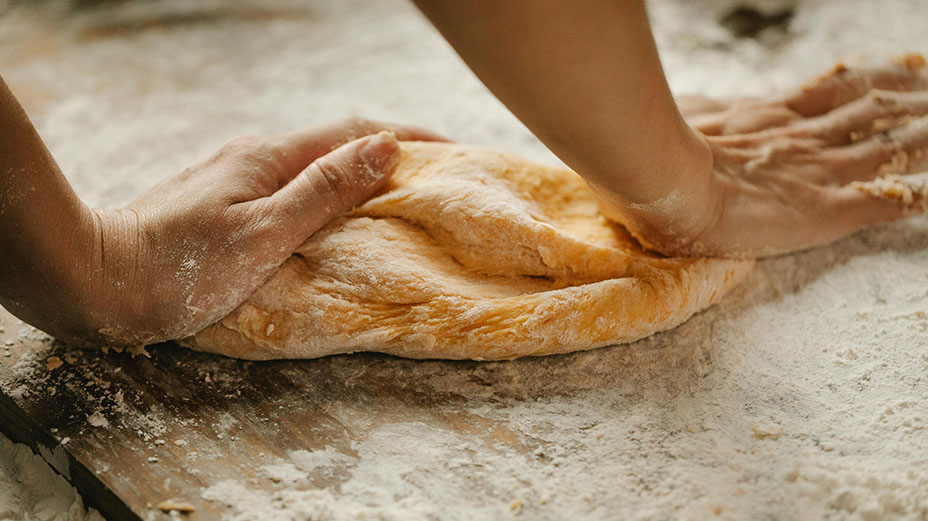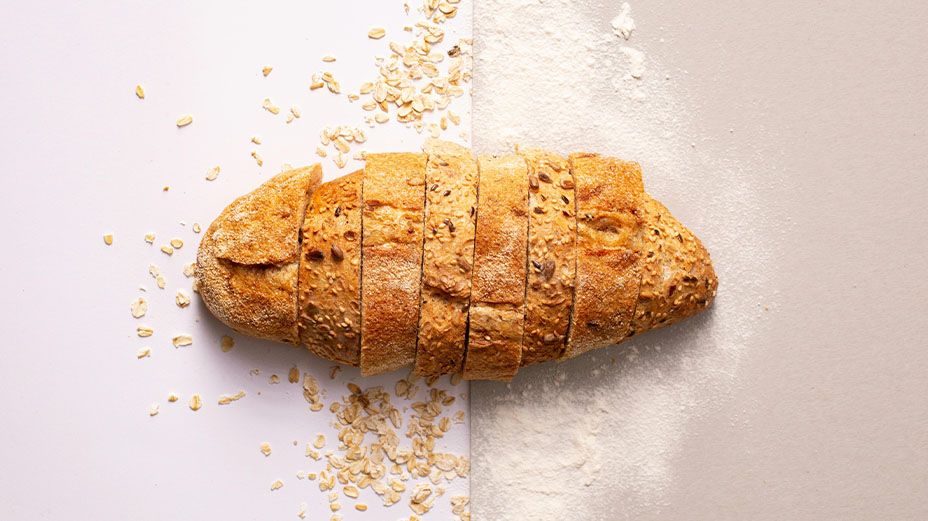Wholemeal flour is flour that has been obtained by milling wheat grains, that is, all the above components without any additions or omissions
Wheat has three outer layers, the husk, the aleurone layer and the endosperm, and the wheat husk accounts for 9%, the aleurone 8%, and the endosperm 80% of the dry weight of wheat, and the other 3% is related to the wheat germ, which is There are long sides of the wheat grain.
The main part of the wheat husk is cellulose or fiber, which, in addition to B vitamins, contains 3% of minerals such as iron, zinc, magnesium and calcium, but 18% of vitamins and 9% of lipid (fatty) substances are hidden in the structure. Wheat is present in the aleurone layer.
Wheat germ also has 36% protein in its structure and is rich in fats and B group vitamins.
Wholemeal flour:
This flour is prepared from all components of wheat grain (endosperm, bran and germ) after initial peeling. The degree of extraction and the high percentage of bran (2-6% bran extraction) make this flour have the highest nutritional value. Bran forms the outer wall of wheat, and this part of wheat has large amounts of fiber, minerals and vitamins.
Wholemeal bread:
Wholemeal bread is bread made from wholemeal flour, which is the main ingredient of the dough.
It is interesting to know that the whole bread is the color of wheat grains (golden), it has a better and longer shelf life
Health benefits of baking with wholemeal flour
Fiber is the main reason for consuming wholemeal flour. Adults need 25 to 35 grams of fiber per day, which is very good for your health.
The fiber in wholemeal flour can help move food through your digestive system, improve digestion, and help prevent constipation. Foods with fiber include wheat, whole grain bread, whole grains, brown rice, legumes, carrots, cucumbers and tomatoes.
1- Improve digestion
Whole grains also have other digestive benefits. The fiber content in whole grains keeps bowel movements regular and helps prevent diverticulosis, a condition in which small pouches form in the lining of the large intestine, causing inflammation, diarrhea, and pain. Whole grains also contain lactic acid, which increases the “good bacteria” in the colon (preventing bloating). These bacteria improve digestion and also strengthen the absorption of nutrients and the body’s immune system.
2- Reducing the risk of heart diseases
Whole grains not only help prevent bad cholesterol from being absorbed into your body, but they also lower triglycerides, both of which are major risk factors for heart disease. Whole grains reduce the risk of heart disease overall. One study found that women who consumed 2 to 3 servings of whole grain products per day were 30 percent less likely to have a heart attack or die from heart disease than women who consumed less than one serving per week.
3- Lower blood pressure
The heart benefits of whole grains don’t stop with cholesterol and triglycerides. They also reduce blood pressure, which is one of the most important risk factors for heart disease. One study found that men who ate more than seven servings of whole grains per week had a 19 percent lower risk of developing high blood pressure than men who ate one or less. Studies in women show similar benefits.
4- Control the weight
People who eat more whole grains are more likely to maintain a healthy weight and less likely to gain weight over time than people who eat refined grains. In one study, women who ate the most wheat germ, brown rice, whole-wheat bread, and other whole grains had a 49 percent lower risk of weight gain over time compared to women who ate the most white bread. Over a 12-year period, middle-aged men and women who ate a high-fiber diet gained 3.35 pounds less weight than those who followed refined foods.
5- Redistribute the fat
Even though eating whole grains won’t directly cause you to lose weight, studies have shown that including whole grains as a major part of your diet can help you lose body fat and promote healthy fat distribution. Eating whole grains can reduce belly fat, or what scientists call “central obesity.” Too much belly fat increases the risk of diabetes and other health problems.
6- Feel full
One of the ways whole grains can help you control your weight is by making you feel fuller than refined grains like cookies or white bread. According to Ganz, the author of the book, the diet with small changes, “whole grains are digested and have a more satiating effect.”
7- Regulation of blood sugar
One of the main benefits of whole grains is that they help prevent your blood glucose from spiking, which can lower your risk of developing type 2 diabetes. In one study, women who ate 2 to 3 servings of whole grains per day were 30 percent less likely to develop diabetes than women who consumed only whole grain products. One analysis also found that people who ate 3 or more servings of whole grains per day had a 32 percent lower risk of developing diabetes than those who ate refined grains. Eating whole grains has been shown to have a positive effect on type 2 diabetes, so they are a great choice for people with prediabetes or high risk of diabetes.
8- Provide vitamin C and group B vitamins
Like calcium, whole grains aren’t your first source of vitamin C, but you can get it from some foods
Get your daily recommended intake from a whole grain called amaranth. Originating in Mexico and Peru, this grain also contains other vitamins and minerals, including protein, and is high in protein, keeping you fuller for longer. As for other sources of vitamin C, you can consume wheat bran, cantaloupe, citrus fruits, broccoli, and tomatoes. B vitamins include thiamin, riboflavin, and niacin, which are beneficial for brain health and function.
The advantages of using a roller mill in the production of whole flour:
Milling is the separation of different parts of wheat according to its grain size, ash and rheological properties during the modern beating mechanism (Roll-Mill) and finally mixing these components based on the properties that the final product requires for baking.
Separation of wheat layers
Humidity control
Granulation control
Controlling the non-entry of pericap, which is the place of accumulation of heavy metals, agricultural toxins and storage pollutants
Control of starch damage
Production of flour with minimal mechanical damage
Production in high tonnage
Removal of primary layers due to high phytic acid content and low water absorption (acidphytic: it can bind many minerals including iron, amino acids and proteins and make them unabsorbable.)




